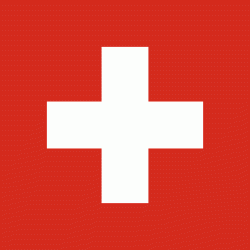Täuffelen
Täuffelen is a municipality in the Seeland administrative district in the canton of Bern in Switzerland.
Täuffelen is first mentioned in 1228 as Choufalli. In 1280 it was mentioned as Tofallie.
The lake shore was inhabited during the Neolithic and Late Bronze Age. In addition, prehistoric artifacts have been found in the Täuffelenmoos bogs near the modern village. Both Täuffelen and Gerolfingen grew out of celtic villages. During the Middle Ages Täuffelen village was initially probably part of the Barony of Walperswil. In 1247 it was inherited by the Count of Neuchâtel-Nidau. The Counts held it for about a century and a half, until 1398, when Bern acquired the entire Inselgau, including Täuffelen. Under Bernese rule, Täuffelen, Gerolfingen, Hagneck and Epsach were combined into the Epsachviertel (Epsach Quarter) of the Bailiwick of Nidau. Following the 1798 French invasion, Sutz-Lattrigen became part of the Helvetic Republic district of Seeland. With the 1803 Act of Mediation it became part of the district of Nidau.
The village church of St. Peter and Paul was first mentioned in 1228. However, it was probably built on the ruins of an earlier Roman era settlement. The nave is built in an earlier Romanesque style. The church's Barbara Altar became the center of a regional religious fraternity. In 1528 Bern adopted the new faith of the Protestant Reformation as did all of its lands, including Täuffelen. Today the parish includes the villages of Epsach, Hagneck, Hermrigen and Mörigen. The local Catholic church was built in 1971-72.
Gerolfingen village had a harbor on the lake and was a local trading and fishing center. The residents of Täuffelen grew crops, cared for vineyards on the hill below the church and fished in the lake. The first industrial factory opened in Täuffelen in 1846 and began to change the character of the village. This first factory, which manufactured watch and clock parts, was followed by several other factories. The Jura water correction projects and the construction of the Aarberg-Hagneck Canal between 1868 and 1880 opened up new land around the villages and removed the threat of flooding. In 1916 the growing village was connected to the Biel-Täuffelen-Ins (BTI) railroad. In 1944 the BTI established their headquarters in Täuffelen. While industry grew in the village, cherry orchards flourished in the farm land around it. In 1950 a secondary school opened in the municipality, which brought in students from surrounding communities.
Täuffelen is first mentioned in 1228 as Choufalli. In 1280 it was mentioned as Tofallie.
The lake shore was inhabited during the Neolithic and Late Bronze Age. In addition, prehistoric artifacts have been found in the Täuffelenmoos bogs near the modern village. Both Täuffelen and Gerolfingen grew out of celtic villages. During the Middle Ages Täuffelen village was initially probably part of the Barony of Walperswil. In 1247 it was inherited by the Count of Neuchâtel-Nidau. The Counts held it for about a century and a half, until 1398, when Bern acquired the entire Inselgau, including Täuffelen. Under Bernese rule, Täuffelen, Gerolfingen, Hagneck and Epsach were combined into the Epsachviertel (Epsach Quarter) of the Bailiwick of Nidau. Following the 1798 French invasion, Sutz-Lattrigen became part of the Helvetic Republic district of Seeland. With the 1803 Act of Mediation it became part of the district of Nidau.
The village church of St. Peter and Paul was first mentioned in 1228. However, it was probably built on the ruins of an earlier Roman era settlement. The nave is built in an earlier Romanesque style. The church's Barbara Altar became the center of a regional religious fraternity. In 1528 Bern adopted the new faith of the Protestant Reformation as did all of its lands, including Täuffelen. Today the parish includes the villages of Epsach, Hagneck, Hermrigen and Mörigen. The local Catholic church was built in 1971-72.
Gerolfingen village had a harbor on the lake and was a local trading and fishing center. The residents of Täuffelen grew crops, cared for vineyards on the hill below the church and fished in the lake. The first industrial factory opened in Täuffelen in 1846 and began to change the character of the village. This first factory, which manufactured watch and clock parts, was followed by several other factories. The Jura water correction projects and the construction of the Aarberg-Hagneck Canal between 1868 and 1880 opened up new land around the villages and removed the threat of flooding. In 1916 the growing village was connected to the Biel-Täuffelen-Ins (BTI) railroad. In 1944 the BTI established their headquarters in Täuffelen. While industry grew in the village, cherry orchards flourished in the farm land around it. In 1950 a secondary school opened in the municipality, which brought in students from surrounding communities.
Map - Täuffelen
Map
Country - Switzerland
 |
 |
| Flag of Switzerland | |
Switzerland is geographically divided among the Swiss Plateau, the Alps and the Jura; the Alps occupy the greater part of the territory, whereas the Swiss population of approximately 8.7 million is concentrated mostly on the plateau, where the largest cities and economic centres are located, including Zürich, Geneva and Basel.
Currency / Language
| ISO | Currency | Symbol | Significant figures |
|---|---|---|---|
| CHF | Swiss franc | Fr | 2 |
| CHE | WIR Bank | 2 | |
| CHW | WIR Bank | 2 |
| ISO | Language |
|---|---|
| FR | French language |
| DE | German language |
| IT | Italian language |
| RM | Romansh language |















